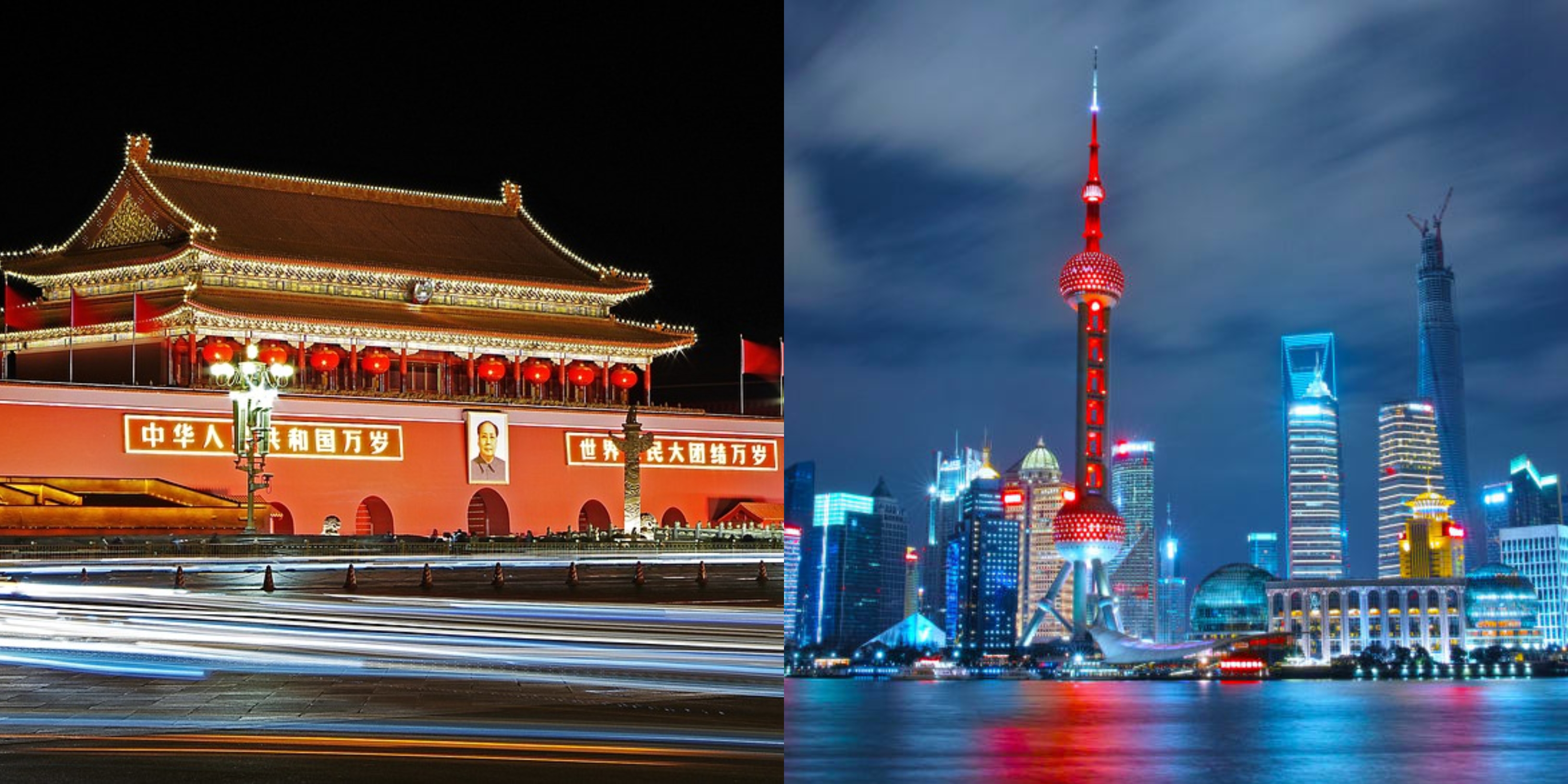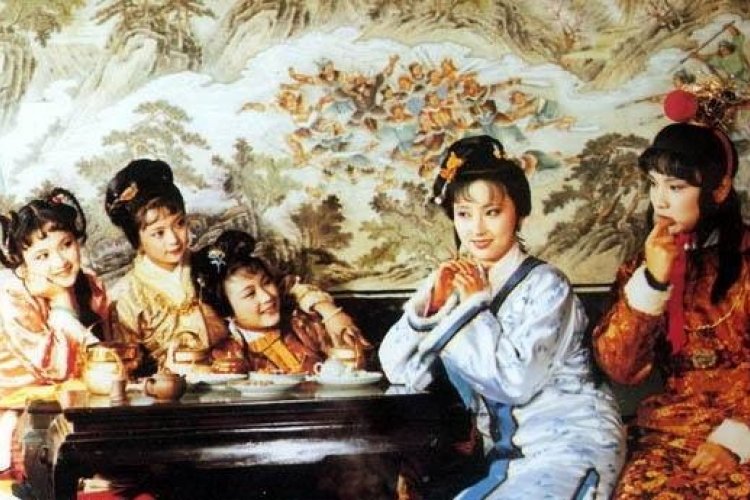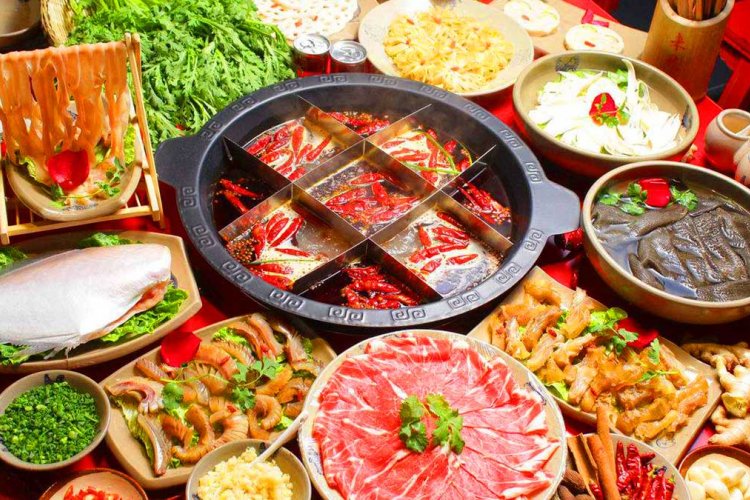Beijing vs. Shanghai? We Won't Be Drawn on This Issue
Breaking news: Beijing and Shanghai have a long term rivalry!
Okay, okay, while there are more articles discussing the differences between these two metropolia than you can shake a stick at, we were impressed by this collection of witty illustrations created by Youguang Studio (有光工作室) which playfully shows some of the stereotypes and grudges that these cities harbor toward each other.
The success of the series lies not in pointing out the obvious differences (Beijingers are uncouth, Shanghainese are soft, etc.) that we've heard ad nauseum, but in finding interesting aspects of daily life that only true inhabitants of the cities would be able to appreciate, and presenting them in an effective, minimalist way.

Nicknames
While we still think that BJ is a pretty hilarious moniker, these illustrators draw a distinction between Beijing, the 帝都 (Dì Dū “Imperial Capital”), and 魔都 ( Mó Dū “Magical Capital”) for Shanghai.

Most-used dialect word
Well, this one says a lot. According to this list, 你丫 (nǐ yā “damn you”) is the most used phrase in Beijing, while Shanghaiers can't stop saying 好伐 (hǎo fá “okay?”).

Geography
Whine about Beijing's traffic all you like, but at least we have a fairly regular 回字型 (huí zì xíng “rectangular”) setup, while poor old Shanghai is stuck with the chaotic, 什么鬼 (shénme guǐ “what the hell?”) city plan.
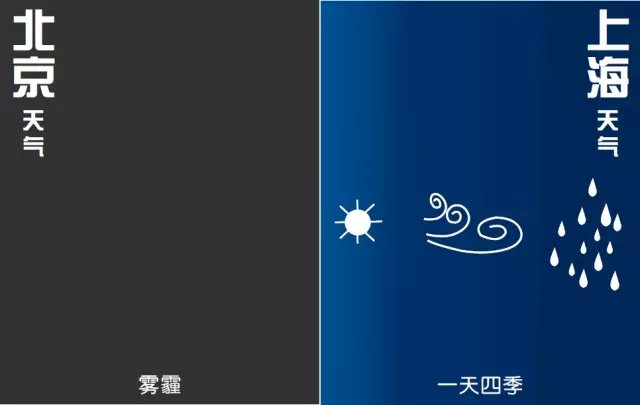
Weather
Beijing gets lovely, thick, soupy 雾霾 (wù mái “smog”), while Shanghai is inflicted by unpredictable, 一天四季 (yī tiān sì jì “four seasons in one day”) weather.
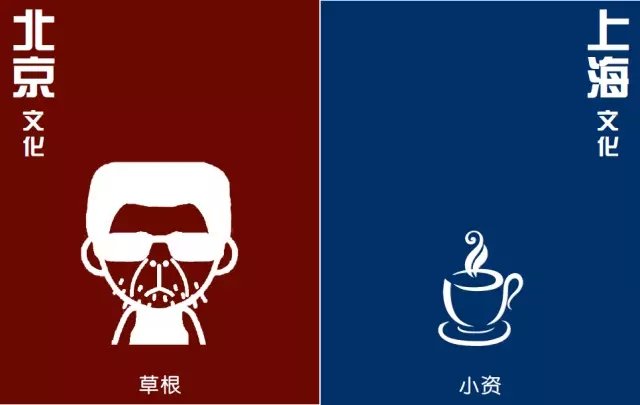
Cultural icon image
Remember what we said earlier about Beijingers being 'uncouth' and Shanghaiise soft? Yup, they get the treatment here, with the comparison between the 草根 (cǎo gēn “grassroots” dude) for Beijing, and 小资 (xiǎo zī “bourgeois”) for Shanghai.
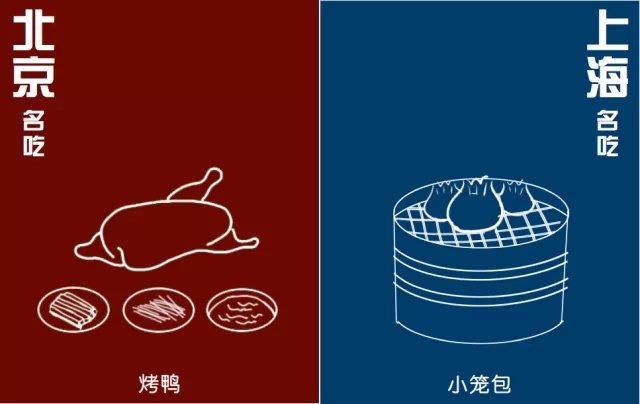
Representative food
What do we all eat? It's 北京烤鸭 (Běijīng kǎo yā “roast duck”) for Beijingren, and 小笼包 (Xiǎo lóng bāo “steamed small meat dumplings in the basket”) for the Shanghai bourgeoisie.
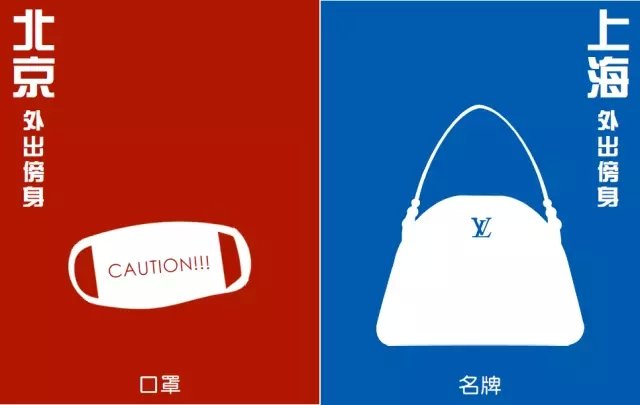
Essential items
Good luck trying to survive Beijing without a 口罩 (kǒu zhào or "mask”), or Shanghai without 奢侈品 (shēchǐ pǐn or “luxuries”) such as an LV bag.
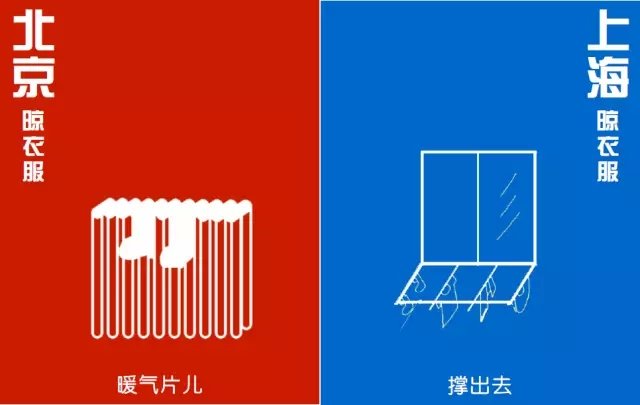
How people dry their clothes
It's all about the 暖气片儿 (nuǎnqì piān er “heating radiator”) for Beijingers, while people in Shanghai use an extended shelf on their balcony 撑出去 (chēng chū qù “to reach out far”) to try and get more sunshine for drying their clothes.
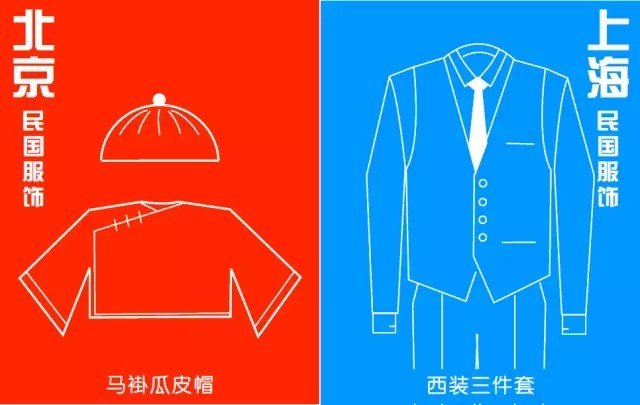
Traditional outfit during 1912-1949
Beijingers used to rock the 马褂瓜皮帽 (mǎguà guāpímào “Mandarin Jacket and hat”) while Shanghaiers, who had more influence from the West, strutted about in 西装三件套 (Xīzhuāng sān jiàn tào “business suit set”).
Check out the full list of illustrations by Youguang Studio here (in Chinese).
Forget BJ and SH, what about Ningbo?! Does second tier necessarily mean second-rate?

